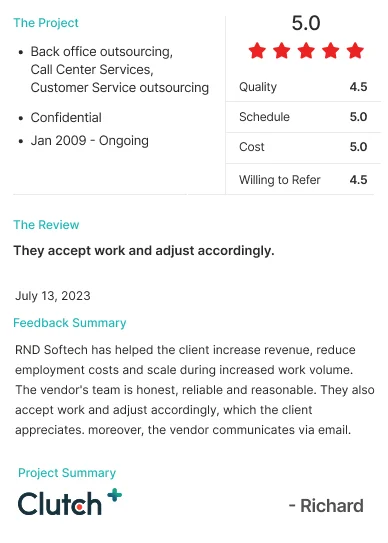1. Real-time monitoring and threat detection
-
24/7 Server Surveillance
Around-the-clock monitoring ensures quick detection of suspicious activities. This continuous surveillance helps identify and respond to potential security breaches in real time. Automated monitoring tools analyze server activity, flagging anomalies that might indicate a cyber-attack. Immediate alerts enable IT teams to take corrective action before a threat escalates. This proactive defense mechanism significantly reduces the risk of data breaches.
-
Proactive alerts and issue resolution
Automated alerts enable IT teams to resolve potential issues before they escalate. These alerts provide detailed insights into system performance, helping administrators pinpoint and fix problems quickly. Proactive issue resolution minimizes downtime and prevents disruptions to business operations. It also ensures that critical business applications remain available, contributing to seamless productivity and improved service delivery.
2. Regular security updates and patching
-
Automatic patch management
Proactive backup services continuously monitor your data and system for potential issues, catching problems early before they become disasters.
-
Vulnerability fixes and compliance
Compliance with industry regulations ensures businesses avoid legal penalties. Server management services conduct regular security audits to identify and fix vulnerabilities. They implement necessary updates to comply with data protection laws such as GDPR or HIPAA. Staying compliant reduces the risk of legal consequences and enhances business credibility. Compliance efforts demonstrate a company's commitment to data security, earning customer trust and loyalty.
3. Data backup and disaster recovery
-
Scheduled backups
Regular backups prevent data loss in case of server failures or cyber incidents. Backups are essential for business continuity, ensuring that critical data can be restored quickly. Server management services automate this process, creating secure data backups at regular intervals. Backup storage is often encrypted and stored in multiple locations for added protection. This multi-layered approach guarantees data availability even during unforeseen events.
-
Business continuity plans
Disaster recovery strategies ensure uninterrupted business operations. These plans outline procedures for restoring systems after unexpected failures. Server management teams create and regularly update business continuity plans tailored to specific organizational needs. In the event of a disaster, pre-defined recovery protocols minimize downtime and data loss. Businesses can continue operations with minimal disruption, preserving revenue and customer satisfaction.
4. Access control and authentication
-
Role-based access control (RBAC)
Access permissions are granted based on job roles, limiting data exposure. RBAC ensures that employees only access the data necessary for their responsibilities. This reduces the risk of insider threats and unauthorized data access. Server management services configure and manage RBAC policies, adjusting permissions as business needs change. This dynamic approach enhances security while maintaining operational efficiency.
-
Multi-factor authentication (MFA)
MFA adds an extra layer of protection by requiring multiple forms of verification. Even if login credentials are compromised, additional authentication steps block unauthorized access. Server management services implement and maintain MFA protocols, securing sensitive data from potential breaches. MFA is particularly effective against phishing attacks and other social engineering tactics, making it a critical security measure.
5.Data encryption and secure communication
-
End-to-end encryption protocols
Encryption protocols secure data transmission, ensuring confidentiality. Data is encrypted during transfer and storage, making it unreadable to unauthorized users. Server management services implement end-to-end encryption methods that protect sensitive information from interception. This ensures data privacy while enhancing compliance with data protection laws. Encrypted communication channels build customer trust and confidence.
-
SSL/TLS Certificates
SSL/TLS certificates establish secure connections between servers and users. These certificates authenticate servers, creating encrypted sessions for data exchanges. Server management services manage SSL/TLS installation and renewal processes, ensuring uninterrupted secure communication. This prevents data interception and safeguards confidential information during online transactions and communications.
Benefits of outsourcing server management services
-
Expertise and experience
Qualified professionals manage servers with specialized knowledge. Server management providers employ certified experts with in-depth industry experience. They stay updated on the latest technologies and best practices, ensuring optimal server performance. Businesses benefit from expert guidance without needing to hire or train in-house IT staff. This results in improved operational efficiency and reduced IT expenses.
-
Cost-effective it management
Outsourcing reduces the costs of hiring and training an in-house IT team. Managed services eliminate the need for expensive hardware, software, and maintenance. Predictable pricing models help businesses budget IT expenses more effectively. Server management providers offer scalable solutions, allowing businesses to pay only for the services they use. This cost-effective approach maximizes ROI while enhancing IT capabilities.
-
Scalability and flexibility
Services can scale up or down according to business needs. As businesses grow, their IT requirements evolve, necessitating scalable solutions. Server management services adapt to these changes, ensuring that servers remain efficient and secure. Flexible service models accommodate fluctuating demands, enabling businesses to respond quickly to market changes. This scalability promotes long-term business growth and success.
Conclusion
- Server management services are essential for enhancing data security in today's digital landscape. By ensuring real-time monitoring, regular updates, data encryption, and access control, these services provide comprehensive protection against cyber threats. Businesses that prioritize server management can reduce risks, improve operational efficiency, and maintain customer trust.

















